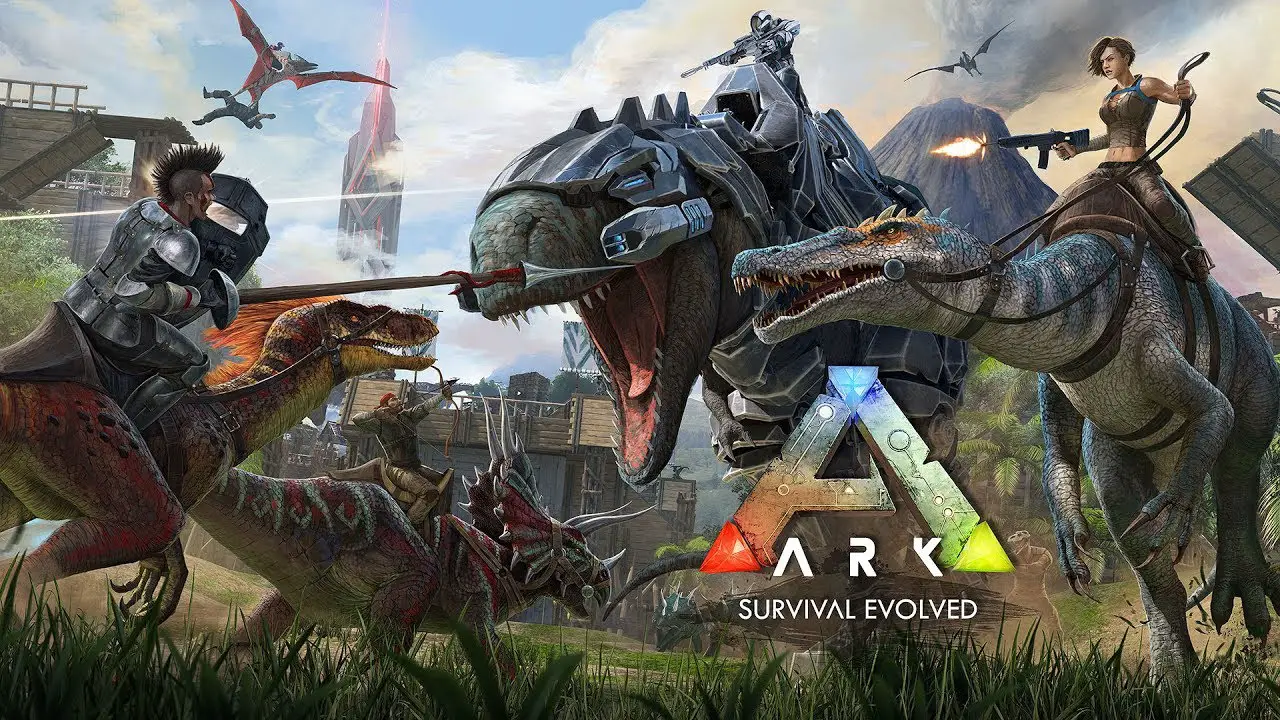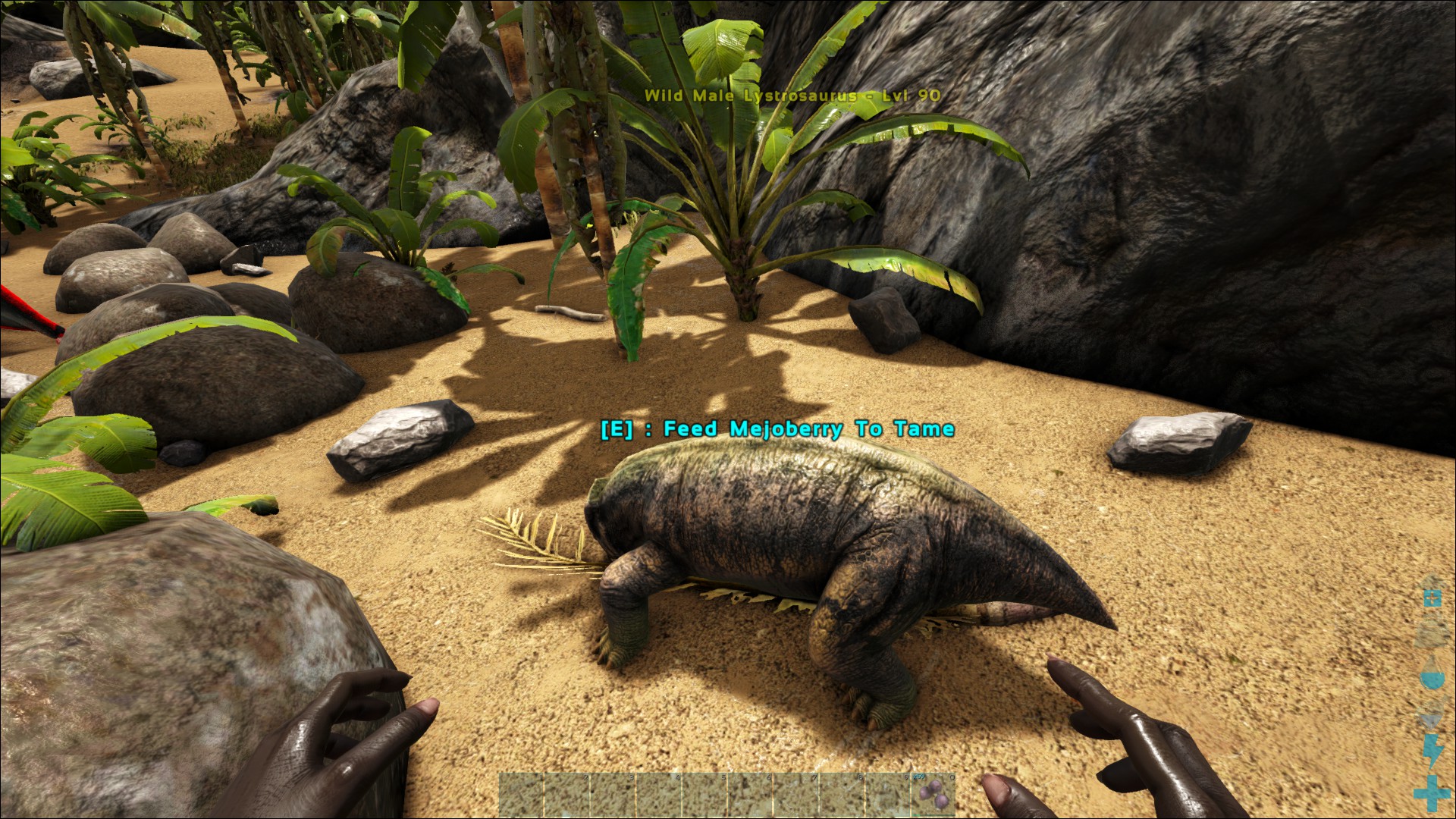How to waste fewer resources and get better tames, passive or knockout, 2,000 hrs certified!
IMPORTANT: Levels of Tames
NOTE: Before you tame anything, make sure it is at a high level. Low-level creatures have lower-level maximums and are generally worse to tame because of diminished utility. For example, the highest level a Trike tamed at level 5 can hope to become is level 80. For a Trike tamed the same way at level 150, its tamed level will be 224 and its maximum level cap will be 297. That’s 74 levels on tame that the first trike will never get.
On official servers and max difficulty maps, the highest level a dino can be is 150, so everything from levels 120 onwards can be considered a good level to tame. If you’re just taming a creature because it looks nice like Mort above, that’s fine, but levels will matter if you want to use a dino for resource gathering, bosses, or anything important.
Utilities
There are three things you need to do well to tame whatever you want.
- Dododex is going to be your best friend when getting dinos. It helps you calculate how much food you need, starve timers, torpor timers, narcotics, and how many tranqs you need (if KO tame). I cannot recommend the site enough, basically, everyone uses it and it makes your day so much easier. It also comes with a tips and comments section, which is chock full of the unfunniest players you will ever know.
- 2. The wiki gives you info on the creature, like its aggression level and locations on the map. It has all official creatures listed and can describe some of the more unique taming processes some dinos have. It will also cover some modded creatures from larger workshop mods like Additional Creatures
- 3. The Tribe Taming List and Tracker. If you open your tribe menu (default “L” on the keyboard) and click on the 5th square, you can pull up the taming list. If your tribe is knocked out or fed any creatures, it will show up here. Click on the creature, and a little hexagon will show up on your screen that shows the taming progress and a torpor bar. This lets you leave the taming site to do something else while keeping an eye on the tame.
Knockout Tames
The first of the two taming methods, and the one you’re more likely to do first, is KO taming. You need three things to get a KO tame done right.
- Food (Meat for Carnivores, Berries for Herbivores, Kibble if Possible)
- Knockout method (Tranq Arrows, Darts, Clubs, Fists)
- Narcotics (Narcoberries, Narcotics, Biotoxin)
- OPTIONAL: Traps (Bear Traps, Bolas, Taming Pen)
If you have a trap, set it so that the dino walks into it, or it is otherwise immobile when you begin taming. This makes it easier to aim and hit the dino with tranquilizers without getting killed or the dino getting away.
Then, start delivering the KO method. If you’re punching or clubbing the dino, pay attention to how many hits you’ve done to the creature. Dododex lists how many to knock it out – trust that number. If you didn’t set a trap, you will notice the dino starts to run away at high torpor, so be ready to deliver that last bit of torpor.
Once the creature’s down, clear the area of any threats that would attack and/or kill it. If anything hits your dino, it will hurt your taming effectiveness, making the taming process slower and get you less levels at the end of the tame. Put the taming food into the dino’s inventory – do not touch the food after this point. Apply narcotics when your tame’s torpor meter gets low by putting narcotics into the inventory and hitting E on the keyboard. Some creatures have high torpor drains, so keep an eye on the torpor meter and when it stops rising.
Over time, you will notice that the dino’s taming meter below the torpor meter will start to rise. Once it fills completely, it will be tamed.
Passive Tames
The other taming method, and the far harder method, passive taming requires no narcotics, but requires you to be undetected to the creature you’re trying to tame. Some items you might need are:
- Food (see your dino’s wiki page or Dododex)
- Ghillie Suit (Doesn’t make you invisible, just makes it easier to approach)
- Bug repellant (If it’s in a cave, you will need this)
The one thing that applies to most passive tames is how to feed it. You want to take the food item and put it in slot “0” of your hotbar on keyboard. Then, when the creature is ready to feed, you should see a message similar to the first image appear over the creature. You should then see that it has to wait to eat again, so wait until it’s hungry and feed it – repeating the process until the taming bar on your screen fills entirely and tames.
Your goal here is to feed the dino without engaging it in combat. For some creatures like Lystrosaurus, you don’t have to do anything because they’re passive. Other creatures like Gigantopithecus and Chalicotherium will beat the everloving ♥♥♥♥ out of you if you get too close, and worse – can hurt your taming efficiency.
Your best method for most of these territorial creatures will be to wear the Ghillie Suit or use Bug repellant, then crouch walk behind the dino and feed it every time it gets hungry. Checking Dododex and the Wiki is especially necessary for these tames, as there are a LOT of different types of tames that require different things (Squids need to be holding something before you can feed it, eels need to be shocking something to feed it.)
Post-Taming and Behavior
If all goes well, your creature should eat all the food you gave it, fill the taming bar after a certain amount of time, and wake up as your newest dino! From here, your job is to get the dino back to base safe. If you have access to a flyer that can carry the dino, or cryopods, you’re in good shape.
The first thing you want to do with your dino is to edit its behavior. At default, your tame will be set to “Stance: Attack YOUR Target” in the behavior section.
ARK dinos are not that smart, so if you keep it on this setting or on Aggressive, it will attack whatever size creature in the game, regardless of what it is. This leads to things like Dilos taking on Brontos, and the Bronto ruining your cute little thatch hut, so I don’t recommend these behaviors unless your dino can kill everything around it fast. Dinos on Passive Flee will try to run away from any danger and stop running after a certain distance. This mode isn’t really recommended because the aggressor can just follow the dino wherever it goes.
Passive mode and Neutral are better for keeping things in order. Dinos on neutral will only attack things that hit you, your base, or other dinos. Dinos on passive will not react to any aggression no matter what. This is a good setting for dinos that would be annoying to move back into place or are inside, away from any threats. This mode works best for tames that have a good health or attack stat – guarding your stuff so that you don’t have to.
End of Guide
Well, I hope that the guide saved you even a little bit of headache getting the dino you want. I don’t really have any server to shill for or anything to promote other than guides I might make in the future. Other topics I’m considering are Transfers, Breeding, and Resource Guides. Otherwise, good luck with your ARK playthrough!












